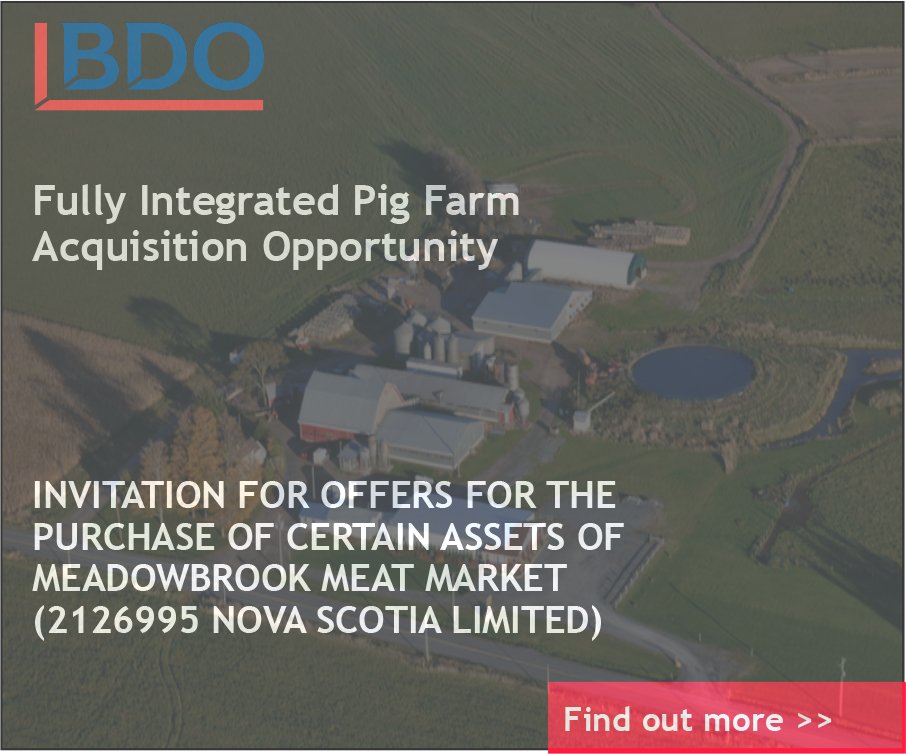Nuffield scholar studying beef production systems abroad
/by Ellen Crane
When is the last time you purchased a beef product in a grocery store? For many producers, purchasing grocery store beef is not a regular activity. The modern consumer has become increasingly conscious about the products they purchase. Is it good for me? Is it good for the environment? These are just a couple of attributes of beef production a consumer may consider when making purchase decisions.
These considerations led to the topic of my Nuffield Canada study: “Which attributes of beef production is the international consumer willing to pay for? What production changes can be made in Canada to leverage consumer marketing in export markets?”
The road map for my study was to travel to regions where Canada currently exports to or has an impending trade deal. This includes areas covered by the Trans-Pacific Partnership (TPP) and the Comprehensive Economic Trade Agreement (CETA) between Canada and the European Union, both of which could provide new market opportunities for Canadian products. Countries to be covered during this study include Scotland, England, Denmark, Ireland, France, Italy, China, Japan, and the United States.
The purpose of the Nuffield Canada program is to expand the opportunities for future leaders in the agriculture sector by having them complete a research project while studying abroad for 10 weeks. Each scholar candidate is provided with a scholarship to assist with their travel expenses. For 2018, the four Canadian scholars who were selected included me and Josh Oulton, who is also from Nova Scotia.
To gather a better understanding of consumer values in each market, my study has led me to look at the various links in the supply chain to get a better understanding of beef production. The following is a brief summary of some key topics that have surfaced during my conversations with farmers, processors, and retailers throughout the United Kingdom and Demark.
EUROP GRID
There is a striking difference between European and North American beef pricing grids. Put simply, the so-called EUROP grid rewards carcasses that are large in size and have a moderate amount of fat.
European producers are not rewarded based on marbling. In fact, producers could be penalized for an animal that is deemed “too fat,” whereas it may qualify for a premium in Canada. For example, a large-framed, lean Limousin feeder animal will receive the best price according to the EUROP grid. This has influenced the breeding decisions of producers to include breeds that produce a higher-yielding, lean carcass, such as Limousin and Belgian Blue.
TRACEABILITY AND RECORD KEEPING
One major difference between the U.K. and Canadian beef production systems is the achievements U.K. producers have made with traceability. At birth, each animal is given two identical ear tags with two numbers on them. The first number is the individual farm number, similar to our current premises identification system. The second number is a unique number the animal will keep throughout its lifetime. The advantage of the double tag system is that should one ear tag fall out, the second tag will be in place. The farmer is required to replace the lost tag within a few days.
Each animal is also given a “passport,” which is available both as a paper version and via an online system, which works very effectively. The passport is used to record all of the animal’s movements off the farm site. The passports are also used when selling and purchasing animals, giving a clear indication of the buyer, seller, and transaction date. The format of the passports varies slightly by country but is required by law to be completed.
According to the farmers I spoke with, the passports were extra work. However, the farmers were all quite proud to say that full traceability is in place. In fact, certain retailers have used this asset to market beef at the local supermarket – having product labels with not only the country of origin, but also the farm and potentially the individual animal identification.
ANIMAL HEALTH
While Canada continues to provide surveillance for diseases such as BSE, the U.K. has a whole host of health issues to monitor. Depending on the country, all animals on farm are tested annually for bovine TB. The disease is a major issue in Europe, with outbreaks continuing to surface in both dairy and beef herds. If a TB test comes back as positive, it will result in animal disposal and the operation will enter a more rigorous testing regime. One feedlot operation I visited estimated that one month per year was spent testing for TB in a herd of 500 feeder cattle.
Although not widely used in Atlantic Canada, hormone implants are banned from use in the EU. Farmers are also encouraged to reduce their use of antibiotics and are required to record all drug treatments given, including the drug name, the animal, and the drug withdrawal time.
(Ellen Crane is the new extension coordinator of the national Beef Cattle Research Council and former general manager of the Maritime Beef Council. She grew up on a beef farm in Cardigan, P.E.I., and now lives in Murray Siding, N.S. She is a 2018 recipient of a Nuffield Canada scholarship worth $15,000. The program involves two years of part-time study of a particular agricultural issue and includes international travel.)











